Freshwater drum provide biological control in U.S. studies
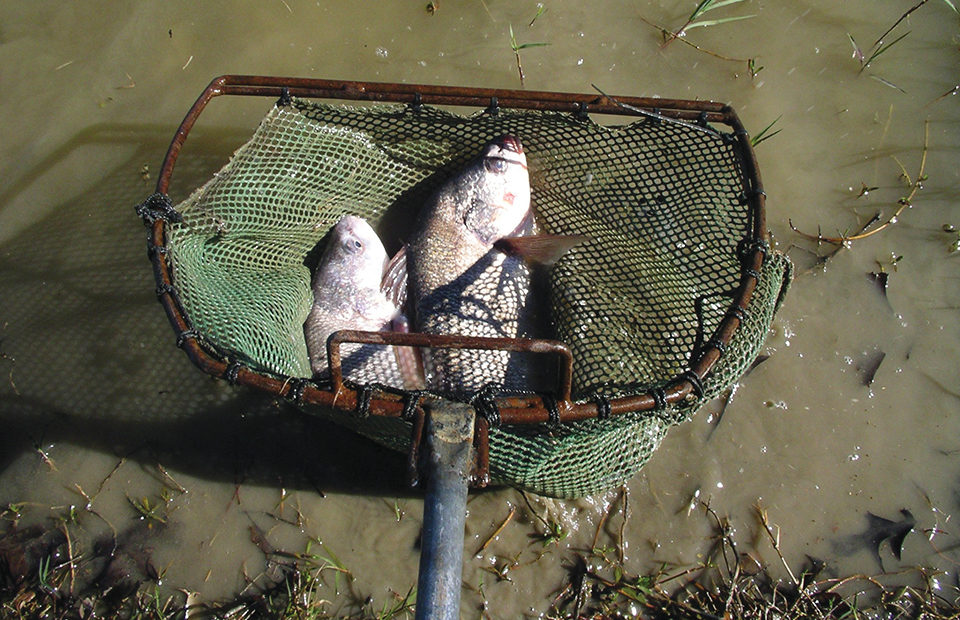
In recent years, a critical need has been demonstrated within the North American channel catfish industry for biological snail control due to the proliferation of a new trematode parasite that has been transmitted from pond to pond throughout the industry, presumably by the American white pelican. In addition to fish and avian hosts, this trematode relies on snails within aquaculture ponds to complete its complex life cycle.
With few legal options for preventing bird access to large aquaculture ponds, alternatives for snail control in this industry are limited to chemical treatments or biological controls. Chemical treatments in production ponds present a number of problems for producers: high cost for repeated treatments, potential ecological impacts, and potential physiological stress on fish in the ponds.
Biological control
While non-native “black” or “snail” carp have been used to control snails on a limited basis, critics of the catfish industry have cited potential threats posed by black carp to endangered freshwater mussels and other native species if fertile black carp were to escape into natural waters. In addition, supplies of sterile triploid black carp are limited, and the U.S. Fish and Wildlife Service has prohibited interstate commerce of black carp, so alternative native species must be considered.
The freshwater drum (Aplodinotus gruniens), for example, has been proposed as a snail control vector in commercial catfish ponds. Native throughout central and eastern North America from Canada to Guatemala, it is the only freshwater member of the family Sciaenidae, which also includes corvina, sea trout, and similar species throughout the world. To date, however, a lack of reliable fingerling sources has prevented researchers from evaluating this potential remedy.
Seedstock production
Little information is available concerning artificial spawning of wild-caught freshwater drum. In their natural riverine habitat, fish of 4 or 5 years of age exhibit an extended spawning season, with females spawning several to many times each year. Although artificial spawning of freshwater drum has been attained by stripping ova and milt from mature fish, this approach has not proven feasible under commercial hatchery conditions.
Freshwater drum fingerlings have been produced in an outdoor hatchery at the Osage River Catfisheries in Missouri, USA, but the detailed methods are considered proprietary. At Langston University in Oklahoma, USA, researcher Conrad Klienholz has demonstrated successful pond spawning of freshwater drum over the past several years. In 2006, this species was also pond-spawned at the Louisiana State University Aquaculture Research Station.
In pond spawning, drum as young as 2 years old reproduce successfully. However, it appears desirable to condition fish in ponds for a number of months following collection from the wild before attempting to spawn them. The physical condition of female broodstock is a critical consideration in terms of hatching success.
Snail control research
Over the past several years, Louisiana State University Agricultural Center personnel conducted two studies to evaluate the potential for snail control using freshwater drum in catfish fingerling ponds. Much of this effort was made possible through funds provided by the Louisiana Catfish Promotion and Research Board, and U.S. Department of Agriculture aquaculture grants.
The first study, which used freshwater drum fingerlings obtained from Kleinholz in Oklahoma, was conducted from November through May. Twenty outdoor tanks with approximately 15 cm of soil were filled with pond water to a depth of 85 cm, seeded with 20 adult planorbid snails each, and supplied with aeration via airstones. Drum fingerlings were stocked at approximately 2,100 or 4,200 per hectare (ha). Two stocking sizes – 10 ± 2 and 15 ± 2 cm average length – were also evaluated. Four tanks were used for each size/density combination, plus four control tanks with no fish.
Overall drum survival of approximately 84 percent did not differ significantly between the size groups. Snail control did not differ significantly among the size groups or drum densities. The presence of drum, at either density, significantly reduced snail populations.
The second study was conducted June through November. Sixteen tanks were utilized with yearling drum ranging 18 to 23 cm in length. Seven tanks were stocked with 2,100 drum per ha and 25,000, 2-cm catfish swim-up fry per ha. Five tanks were stocked only with swim-up fry at the same rate, and four tanks with no fish were used as controls. All tanks were stocked with 20 adult planorbid snails.
Drum survival was 100 percent, while catfish fry survival was 43 percent with the drum and 60 percent in monoculture. These differences, however, were not statistically significant. No snails were found in the presence of drum, while catfish monoculture and control tanks had 74 and 33 snails per 3.3-square-meter sample, respectively.
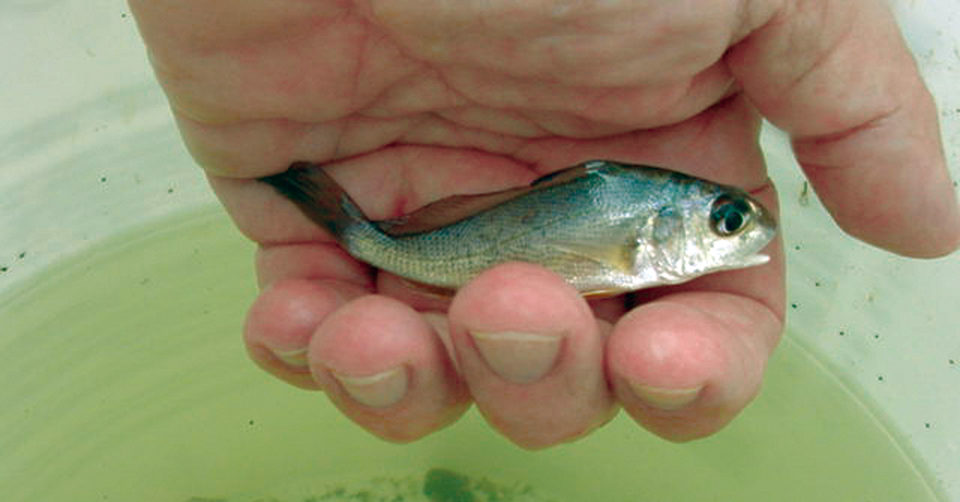
Adults held for future trials
Approximately 30 captive-raised freshwater drum from the two studies were maintained for future spawning, and approximately 80 wild adult drum were collected between December 2005 and March 2006. The wild fish were obtained with the assistance of the Louisiana Department of Wildlife and Fisheries, and the U.S. Fish and Wildlife Service. Drum collected during this period traveled well, with 92 percent survival recorded over the following two months. The fish were stocked in ponds with adult koi carp that provided fingerling koi as forage food for the drum.
In spite of the loss of approximately 25 adult drum due to an unexpected oxygen depletion in one of two holding ponds, surviving fish spawned in ponds at the Aquaculture Research Station during the spring of 2006. Currently, an estimated 300 to 350 young drum are being held for additional polyculture trials with catfish to determine how few drum are required to effectively eliminate snail populations. Fingerlings produced from the 2006 spawns grew to 15 to 20 cm by late October and spawned in April 2008. Interestingly, no snails have been found in the drum ponds since the spring of 2006.
Other drum applications
Another demand for cultured freshwater drum involves the production and restoration of various freshwater mussels, many of which are threatened or endangered. The drum serve as a unique intermediate host in the early life history of several of these bivalves.
Freshwater drum is also emerging as a culture species in its own right. Asian consumers, both in North America and mainland China, are interested in this product. Approximately 5,000 hatchery-reared freshwater drum fingerlings were shipped from North America to China in 2002 for grow-out trials and use in the propagation of freshwater mussels.
(Editor’s Note: This article was originally published in the May/June 2008 print edition of the Global Aquaculture Advocate.)
Now that you've reached the end of the article ...
… please consider supporting GSA’s mission to advance responsible seafood practices through education, advocacy and third-party assurances. The Advocate aims to document the evolution of responsible seafood practices and share the expansive knowledge of our vast network of contributors.
By becoming a Global Seafood Alliance member, you’re ensuring that all of the pre-competitive work we do through member benefits, resources and events can continue. Individual membership costs just $50 a year.
Not a GSA member? Join us.
Author
-
Charles G. Lutz, Ph.D.
Specialist and Professor of Fisheries
Aquaculture Research Station
Louisiana Agricultural Experiment Station
Louisiana State University Agricultural Center
2410 Ben Hur Road
Baton Rouge, Louisiana 70820 USA[117,100,101,46,117,115,108,46,114,101,116,110,101,99,103,97,64,122,116,117,108,103]
Tagged With
Related Posts
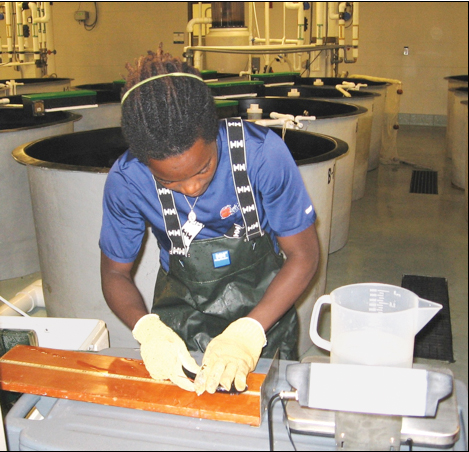
Aquafeeds
Fatty acid composition of red drum maintained by fishmeal, fish oil
Recent research by the authors evaluated strategies to reduce fishmeal and fish oil in diets for red drum by substituting terrestrial proteins and lipids while maintaining beneficial fatty acids with DHA supplements derived from marine algae.
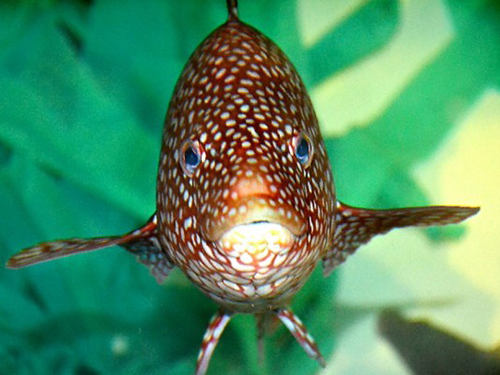
Health & Welfare
Extensive wrasse use keys up ‘cleaner fish’ conservation questions
Few could argue that a reduction in sea lice-fighting chemicals isn't a win for the fish and for the environment. The downside, however, is that increasing numbers of cleaner fish are being caught for use on salmon farms.
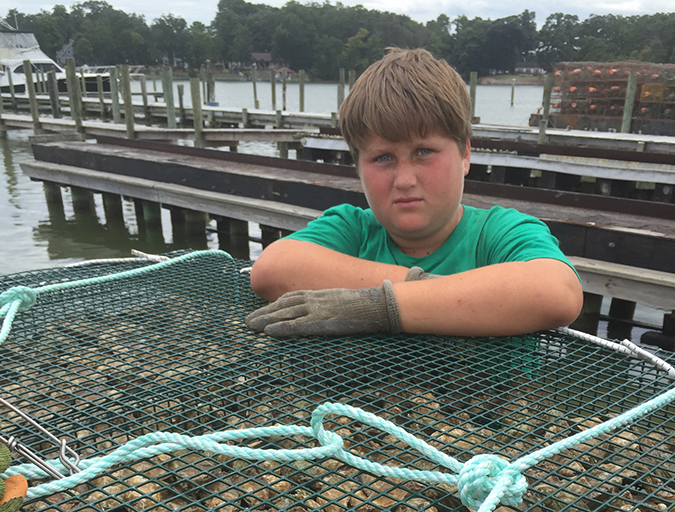
Responsibility
Ailing waterways hail the oyster’s return
The Lower Hudson Estuary and Chesapeake Bay, two waterways once home to thriving oyster beds, would welcome the shellfish’s return. Aquaculture initiatives in both areas aim to reinvigorate the water and the communities they support.
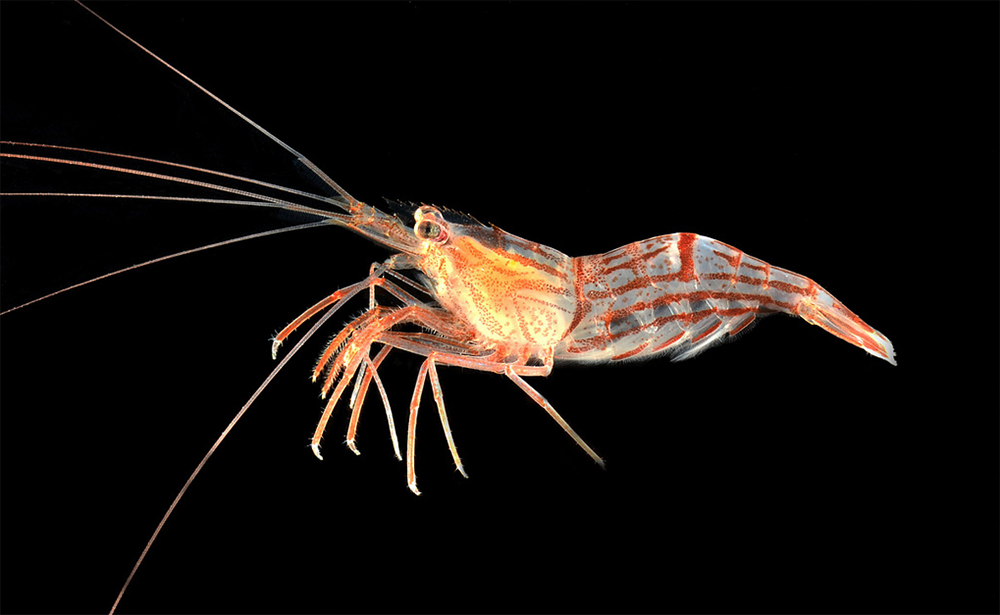
Responsibility
Parasite control in aquaculture takes teamwork
Researchers in Australia are experimenting with a biological control for warmer climates: a parasite-eating shrimp popular with aquarium enthusiasts.


